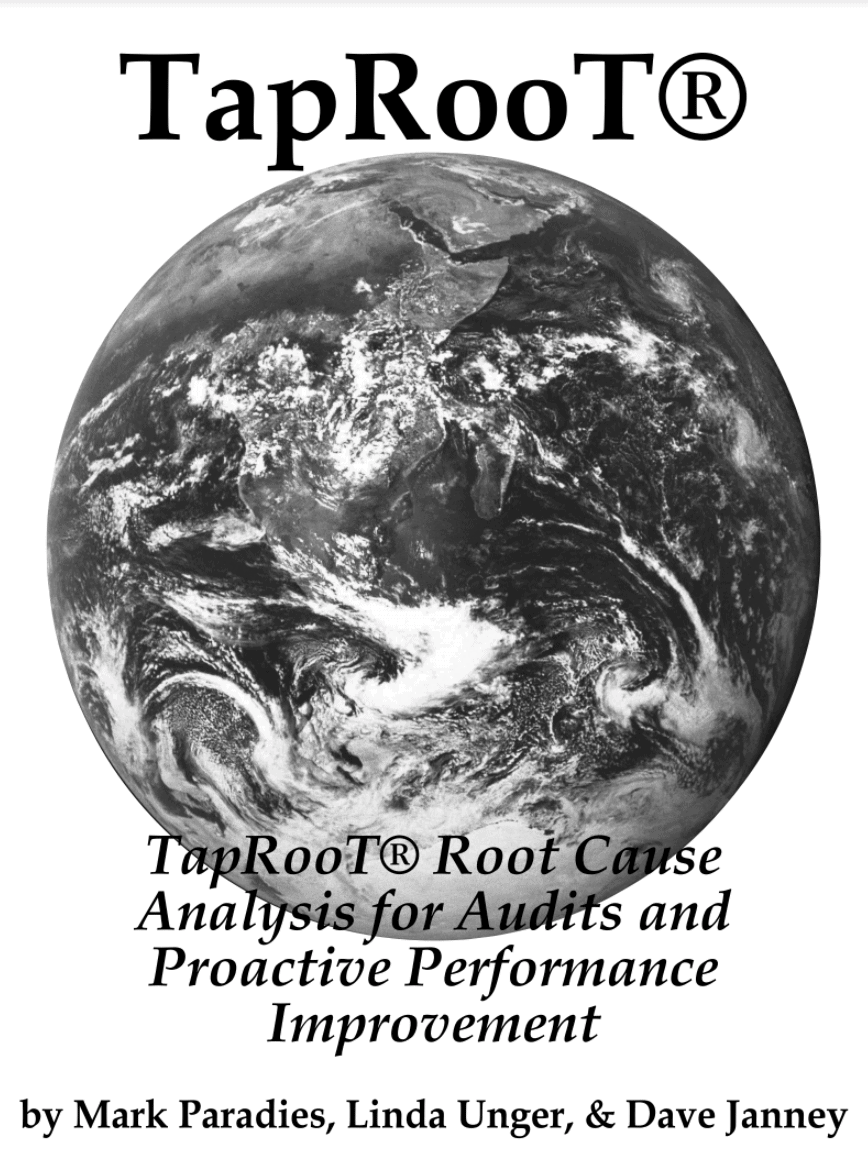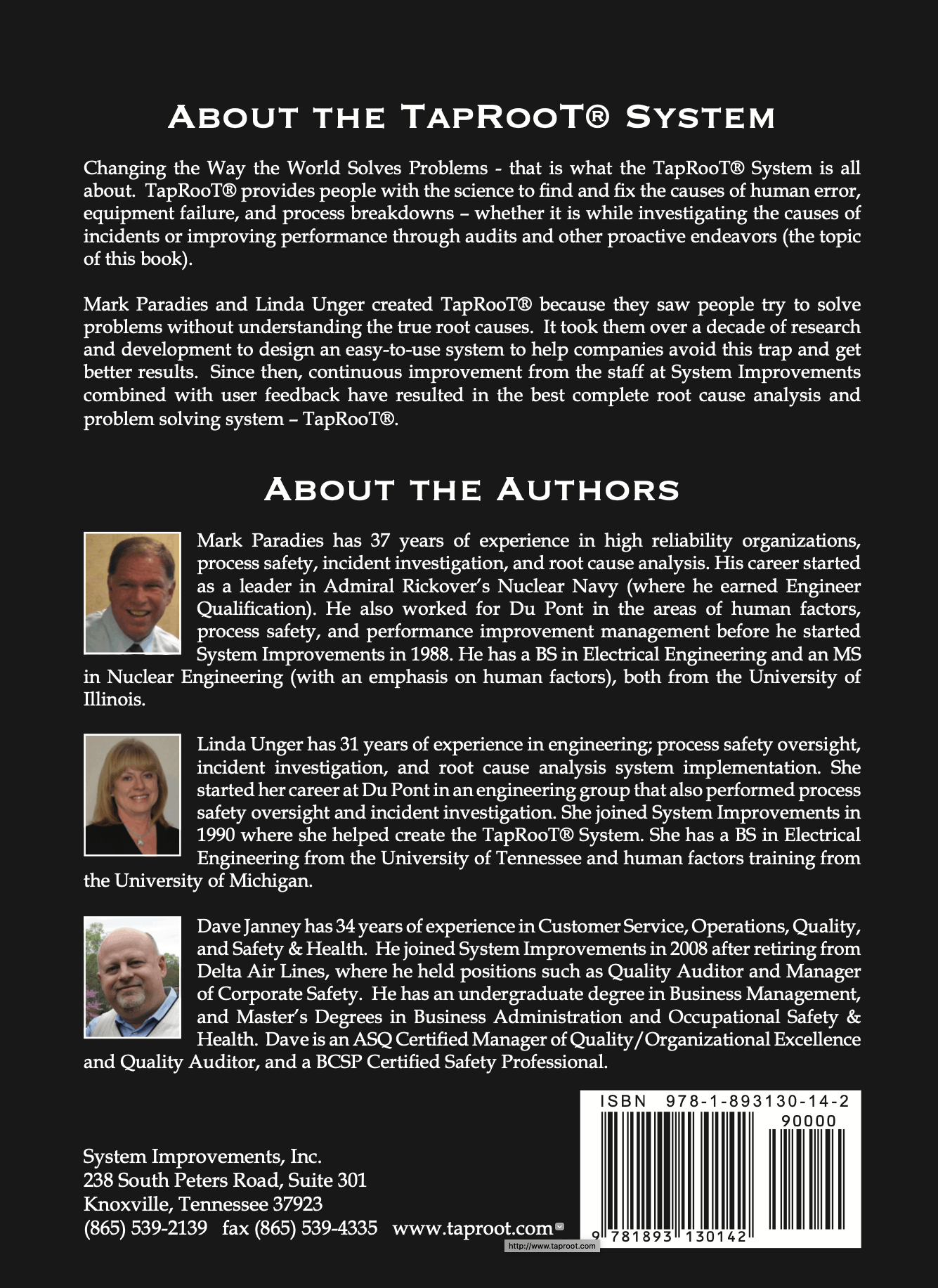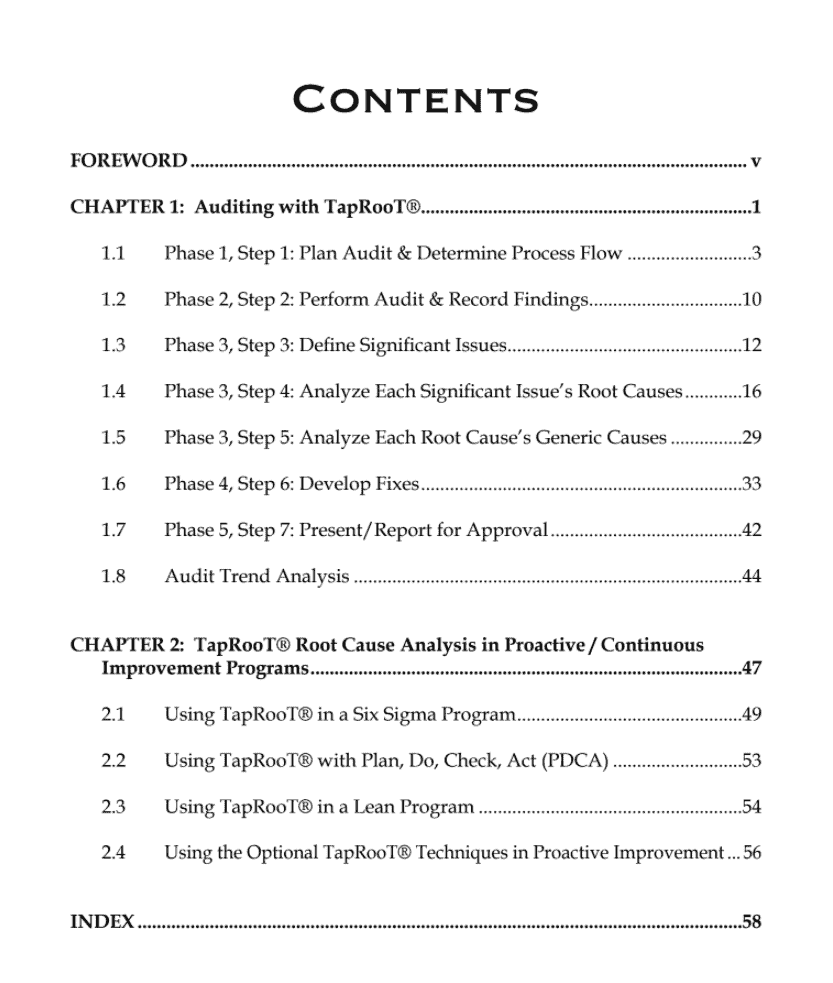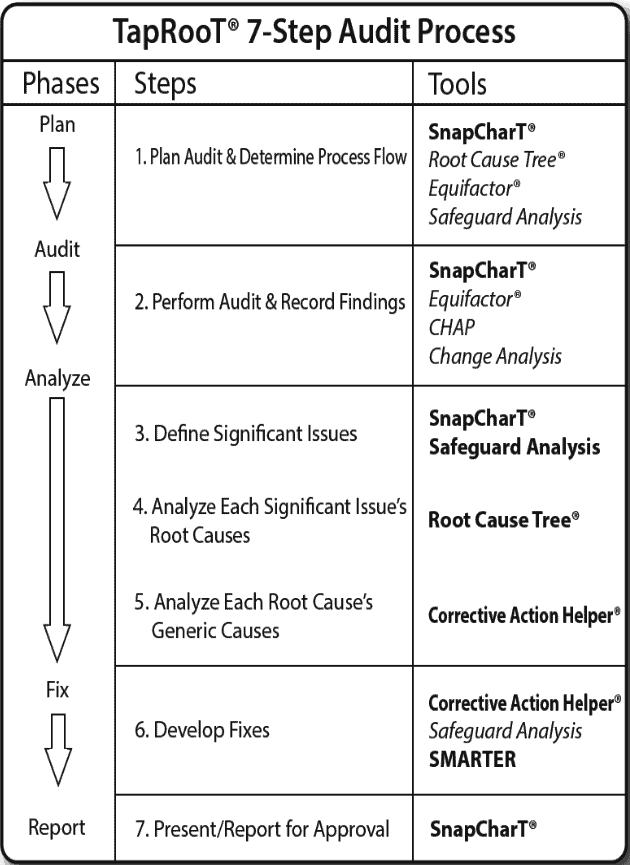Book 6: TapRooT® Root Cause Analysis for Audits and Proactive Performance Improvement

Improve Performance Using TapRooT® RCA for Audits
Is something missing from your audits of performance? Maybe you need better root cause analysis to improve your audits. Read on to learn more…
Using TapRooT® Root Cause Analysis for Audits
The TapRooT® Root Cause Analysis System is a robust, flexible system for analyzing and fixing problems. The complete system can be used to analyze and fix simple or complex accidents, difficult quality problems, hospital sentinel events, and other issues that require a completed understanding of what happened and the development of effective corrective actions. However, wouldn’t it be better if you never had to investigate in the first place? How can TapRooT® RCA and proactive audits help you do this? By improving your audits.
Many companies perform audits. Unfortunately, in some cases, this work does not yield improvements. Why? There are many reasons, but the primary reason is the lack of a quality root cause analysis process. A company can actually be very good at finding problems, but not be effective at fixing the root causes of those problems.
TapRooT® RCA, when used with auditing and proactive improvement programs, can help lead to organizational excellence and reduce the number of audits required.
The Book About Using TapRooT® RCA for Audits
What’s in Book 6, TapRooT® Root Cause Analysis for Audits and Proactive Performance Improvement? The cover (front and back) and table of contents are shown below…



You can see that the 60-page Book 6 is a fast way to learn how to apply the TapRooT® RCA Techniques that you already know to improve your company’s audits.
TapRooT®’s 7-Step Audit Process
When someone performs an audit and doesn’t really improve the process, the audit is just a hassle. Why could an audit fail to yield improvement? It could be that the corrective actions were not effective because of poor root cause analysis. This results in cursory corrective actions that fail to cause long-term improvement.
The purpose of Book 6, TapRooT® Root Cause Analysis for Audits and Proactive Performance Improvement, is to explain how an auditor can use the same root cause analysis techniques learned to investigate quality, safety, production, or equipment reliability incidents to find and fix the root causes of Significant Issues identified during audits.
Book 6 teaches the 7-Step Audit Process (shown below) to yield accurate root cause analysis and effective corrective actions.

Column 1 is the audit phase. Column 2 is the audit step. And column 3 are the tools used in that step.
Want to learn more about this process? Below is a brief description of each step in the process.
Step 1: Plan & Determine Process Flow
Before starting an observation, you must decide what you will observe and how you will observe it. This targeting of your observation can be done by:
- Looking at past issues
- Identifying the biggest safety hazards
- Flowcharting a process and identifying key Safeguards
Step 2: Perform Audit and Record Findings
The next step in the TapRooT® 7-Step Auditing Process is to perform an audit. During this process, the auditor will find things that are successful and things that are failures/issues. Some of these issues could include:
- People doing things other than what was expected
- Broken rules, violated procedures, and unreasonable schedules
- Additional hazards that weren’t expected
- Failed Safeguards of faulty equipment
Step 3: Define Significant Issues
What is a Significant Issue? It is the mistake, error, or failures observed during an audit that could have caused a:
- Safety incident
- Quality issue
- Reliability problem or equipment failure
- Hospital sentinel event
- Production problem
Significant Issue Defined:
“A mistake, error, or failure that could cause a failed Safeguard or could allow an incident’s consequences to be significantly worse.”
Book 6 provides examples of Significant Issues.
Step 4: Analyze Each Significant Issue’s Root Causes
The person performing the root cause analysis will analyze each of the Significant Issues using the TapRooT® Root Cause Tree® Diagram by working down the tree – eliminating causes that don’t apply and selecting the causes for that Significant Issue.
How do we define a root cause?
Root Cause Definition:
“The absence of a best practice or the failure to apply the knowledge that would have prevented the problem or significantly reduced its likelihood/consequences.”
The search for the best practice or knowledge that would have prevented the problem is what root cause analysis is all about! That’s what the TapRooT® Root Cause Tree® does… it helps investigators and audit participants find best practices and knowledge they need to implement effective fixes to stop problems (or reduce their likelihood).
Step 5 (Optional): Analyze Each Root Cause’s Generic Causes
What is a “Generic Cause?”
Generic Cause Definition:
“The systemic cause that allows a root cause to exist. Fixing the generic cause eliminates whole classes of specific root causes.”
A Generic Cause means your problem is wider than the specific issue you found during your audit. This means when you develop corrective actions, they should address the Generic Cause in addition to the specific root causes, if at all possible. How do you find a Generic Cause? That’s a chapter in Book 6.
Step 6: Develop Fixes (Corrective Actions)
How do you fix a root cause? Good question. First, you can strengthen the existing Safeguards using best practices to make them stronger. You can find these best practices using the Root Cause Tree® and Corrective Action Helper® Guide (or the Corrective Action Helper® Module of the TapRooT® Software).
The Corrective Action Helper Guide® provides suggestions to fix the problems related to each root cause in the TapRooT® Root Cause Tree® Diagram.
Second, you can develop additional independent Safeguards to make your systems more robust. This can include mistake-proofing or new ways to catch errors.
Step 7: Present/Report and Implement Corrective Actions
Most audits require either a written or oral report of what was discovered during the audit. When discussing findings, make sure to present what was done right as well as any Significant Issues. Those being audited will see the audits as a fair representation of performance and be more willing to accept and correct issues if a balanced picture is presented.
Time to Buy the Book
Interested in using advanced root cause analysis for audits? It’s time to buy Book 6: TapRooT® Root Cause Analysis for Audits and Proactive Performance Improvement! Use the link below to get your purchase started…
Or you can get all ten of the TapRooT® Books as a set. CLICK HERE to place your order.



